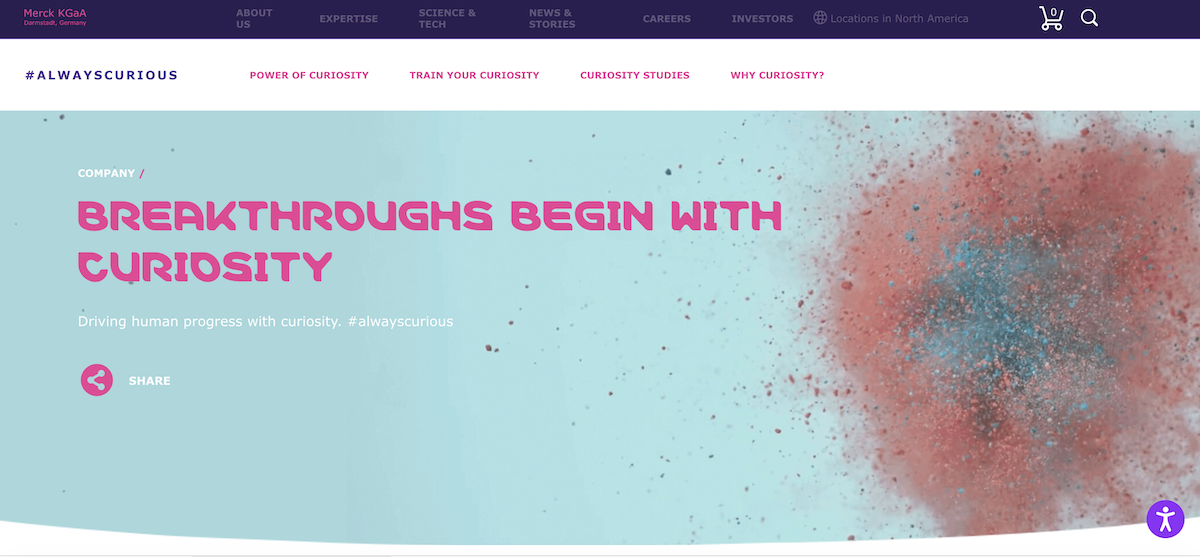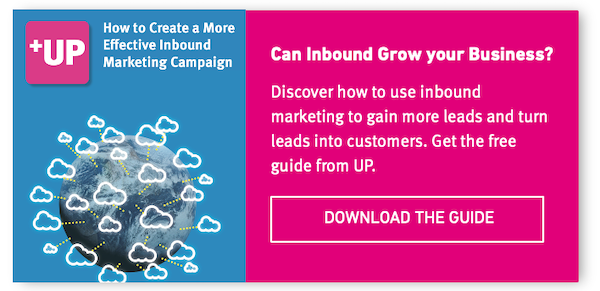Creating an authentic brand that attracts the right audience to your life science company could be seen as the holy grail of marketing. Yet many companies struggle to get this right. What is the secret to creating a brand that garners love?
Life science organizations place a great deal of effort into establishing their purpose and vision for a reason: companies operate much more smoothly with a clear direction. In addition, good branding helps companies win the long-term engagement and loyalty of customers. But branding isn’t just about marketing: it’s important that a brand is built on real values and that it represents an authentic truth.
Buying from a company is no longer only about what they make. Given that the investment cycle can be 7 to 13 years for life science companies supplying capital equipment, maintaining brand recognition means real benefits in terms of customer loyalty, high Net Promoter Scores, lower cost of sales and repeat revenue.
Too often, brands only consider how their message is applied outwardly in terms of communications directed to a target market. But it is equally important to keep the brand alive inside the organization, to consistently confirm a sense of purpose at work, to nurture the company culture and to retain the best staff.
Internal communication of the brand matters, too
Everything an organization does and says should be true to the value proposition. It should impact every single communication that the organization releases. This is the true meaning of being ‘on brand’. Having an authentic brand and staying consistent with how it’s presented matters for internal as much as external communications.
There is a very strong link between branding outwards, as you communicate what your organization holds important, and values, which is how the company behaves to achieve their goals. When branding and values are not united, the organization risks its credibility.
Branding and vision from the marketing department should harmonize with the values and acceptable behaviors set by the human resources department. This ensures that HR maintains and nurtures the company’s values and behaviors, and that every member of the organization is encouraged to ‘walk the talk’ of the brand.
When branding and values are not united, the organization risks its credibility.
A brand needs to ring true for internal audiences as well as for external ones.
When brands merge and consolidate
In the life sciences over the last few years, there have been many consolidations. A number of giant corporations have taken the lead. As small brands are subsumed, the acquired companies tend to lose their original vision and focus. It’s very interesting to see that scientists as customers get quite distressed over this, having loved the brands and the values for which the companies stood.
As consolidations become more commonplace, customers might even become cynical and can often mislead themselves into thinking that the brand was just make-believe. Many employees of acquired companies recognize that their employer lost their mojo, and some extremely valuable talent may choose to leave the company. But some people will remain and want to get it back. Many corporations don’t see the value of doing that. I think that is a big mistake.
The immaterial value of a brand in life sciences, although rarely quantified, can be very high. Consider the Danaher Corporation, which has made a number of acquisitions over recent years. They have allowed their acquired brands and ethos to thrive – and their scientist customers’ trust in them. Danaher were smart about maintaining the brands of the acquired businesses and have enjoyed the consequent rewards.
The question many companies ask is whether the acquired brands should be assimilated, or whether the former brand ethos should be allowed to continue? Here are four important considerations before re-branding consolidated companies:
- Is the brand still relevant?
- Is the brand well-loved?
- Is the brand authentic?
- Is the brand well-known?
When brand values align
There are very few mid-sized life science companies around that aren’t in danger of being gobbled up. It is often harder for mid-sized companies to compete with the conglomerates. In this aspect, it is actually very important for smaller companies to maintain a strong, meaningful brand to be able to differentiate themselves and compete against the big guys.
The one-stop shop offering of conglomerates may be convenient for the purchasing department, but it doesn’t necessarily offer any appeal to the scientist as a customer. Why? Because scientists – like all people – prefer to buy from a brand they believe in and trust, not a brand that is just convenient as a supplier.
In fact, much of the exciting, innovative work is done in the small and mid-sized life science companies, and that is exactly what energizes their customers. Scientists have a leaning in favor of the innovators, the nay-sayers, the crazy ones with the crazy ideas that might just work. Why? Because the small companies often embrace the same spirit of entrepreneurship and risk-taking that scientists do. There is a certain frisson for the daring enterprise – as long as the risks are well calculated and not foolhardy. It’s the essence of why the scientist enjoys rooting for the underdog.
Scientists – like all people – prefer to buy from a brand they believe in and trust, not a brand that is just convenient as a supplier.
As an aside: why should the creative, innovative heart of a business be forgotten about and disposed of? Conglomerates often talk about taking more risks and allowing mistakes to be made; it is actually within these acquired businesses that such behaviors exist. Companies that lack innovation power should ring-fence these innovative, ‘what-if’ behaviors and let them thrive.
A very interesting brand change was launched a few years ago by the Merck Millipore corporation. They performed a rebrand to extol the virtues of curiosity – a highly regarded attribute of a good scientist. I think that in principle Merck Millipore’s ambitions are in the right place. I trust that their transformation is underpinned by the appropriate values and behaviors, and the freedom within their walls to stay curious.
For marketing managers, reaching a target audience means connecting these internal values with all of your external marketing work.
How your brand can connect to the scientist
Let’s say that you are a mid-level marketing manager for one of the larger life science corporations. Clearly you wouldn’t have the level of influence to start reworking or refreshing the brand. But you do have the influence to make the brand permeate your organization. Is there a way to apply your brand on a campaign level or a tactical level and get some benefit?
I’d contend that anyone at the mid-management level should feel it is within their remit to express the brand and make it real. In fact, if you think about it, it’s the only place where it can realistically manifest, and have an effect close to the customer.
One of my favorite ways of doing this in the digital age is through content. Content marketing is very important today, but not only for getting found on the internet by the audience that you are seeking to impress. It’s important to demonstrate your true spirit and willingness to help your audience, in line with your brand promise, and your company’s vision.
It comes down of course to Google Search helping your audience find answers to the questions they have, and solutions to solve their problems. In seeking answers to their questions, scientists searching on the internet find businesses that they want to engage with, because your values match their values, and you understand their pain.
Life science, amongst many industries, is in great need of producing quality content, because the subject matter is often complex and the audience is often well-served by content that helps them think through their problem. We know that the avenues taken by scientists to find relevant information have changed. Informative (not salesy or promotional) content is very good at attracting people when they are seeking answers to questions. Content that helps solve a problem or makes them better at their jobs will get engage them.
Content marketing builds brand awareness
Back in 2012, UP was saying that the nature of marketing and getting noticed was changing rapidly. The power of search implies that every organization with specialist knowledge and information would have to become publishers. We made the daring prediction that companies in life sciences would refine their marketing departments into regular publishers of content about their niche technologies. Of course, we were wrong.
Many life science businesses have highly complex offerings, meaning that it is quite a challenge to find the subject matter expertise to create the content for exactly that niche technology. Their R&D departments might have that expertise, but those talents are often too precious and rare to spend their time on marketing.
What we find is that life science companies are seeking content experts to wrap their heads around their offering, and design for them a professional content strategy to match the needs and desires of the company’s target audience. What they appreciate most is that the content writing team can give them an expert interpretation of their offering, but equally important, an external view of their business and their technology, and line it up with their audience’s world. When the content team is well-versed in the discipline of building and expressing their brand, the effect of the content is powerful in achieving a unique voice for the company.
Need support with life science content?
The UP FOR LIFE team, specialists in life science marketing, offer PhD-level writers, scientists and experts to help craft an inbound and content marketing strategy for you. Whether you need ongoing blog content, white papers, case studies, social media or a paid promotional campaign, UP has experts who can support your needs. Contact UP FOR LIFE.


.007.jpeg?width=1920&name=+UP_Tecan%20content%20and%20inbound%20marketing_Case_Study%20(3).007.jpeg)
